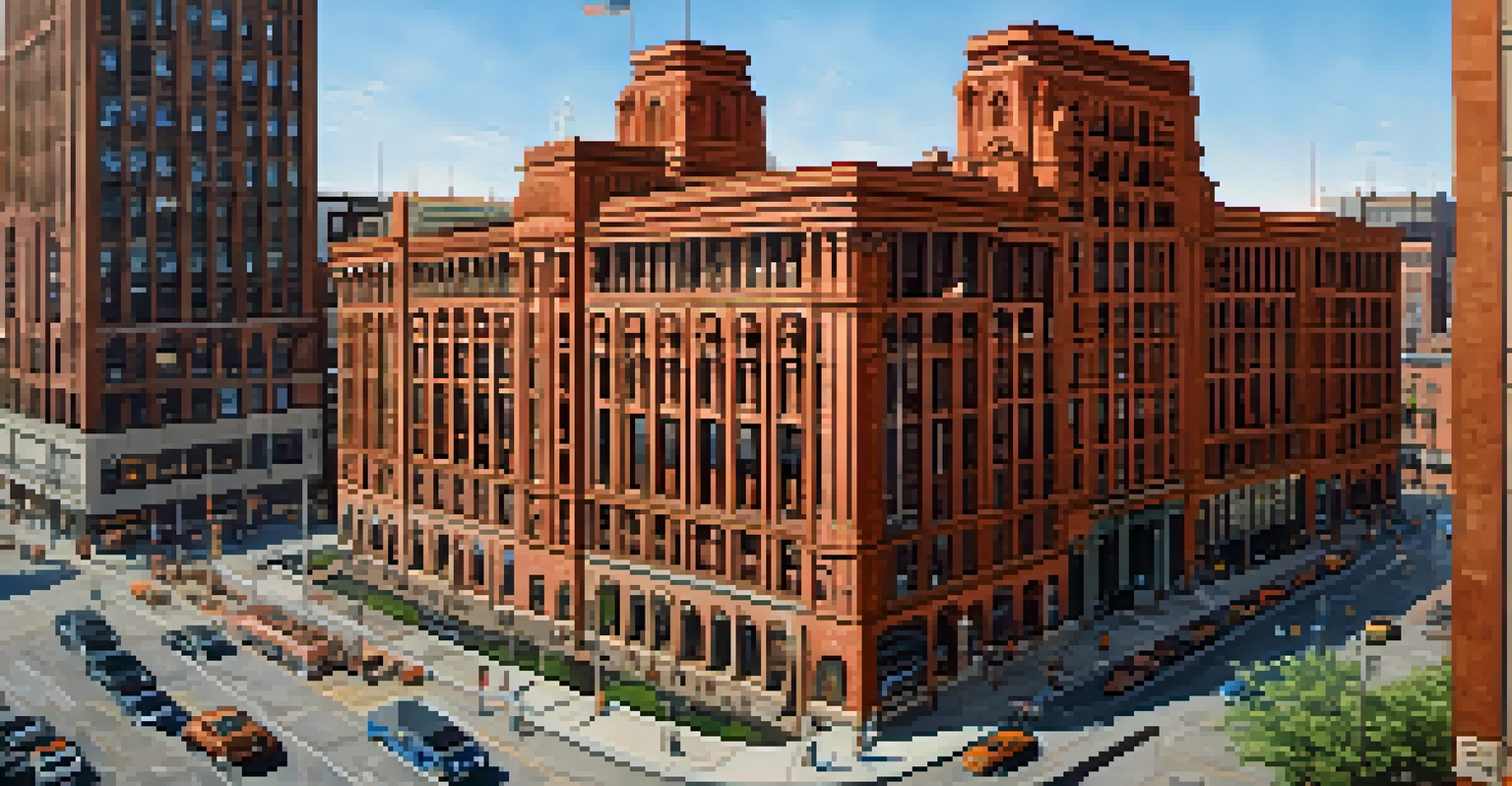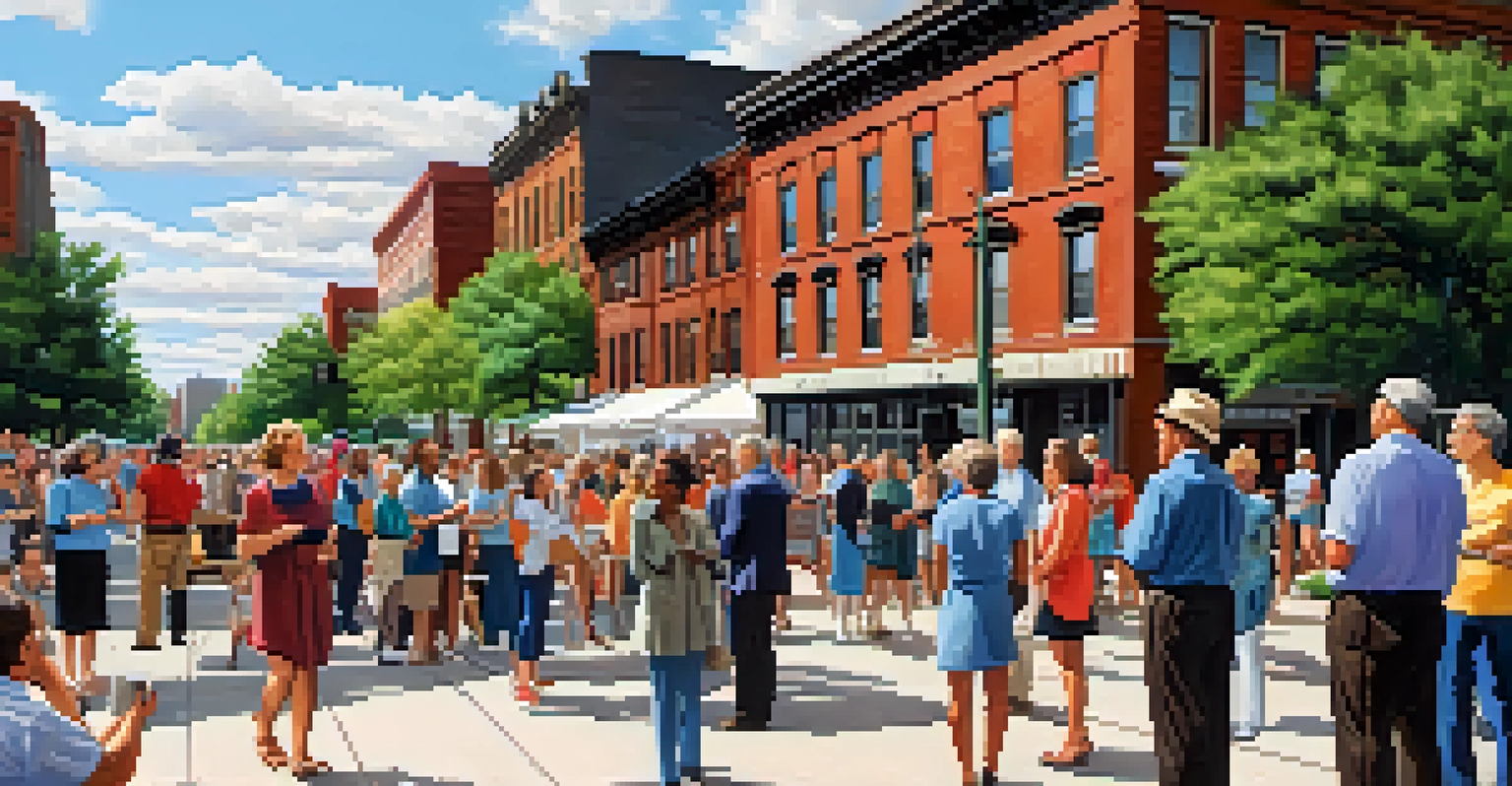Historic Preservation: Saving Buffalo's Architectural Legacy

The Importance of Historic Preservation in Buffalo
Historic preservation is crucial for maintaining the unique character of Buffalo. This city boasts a rich architectural history, with buildings that tell the stories of its past. By preserving these structures, Buffalo not only honors its heritage but also enhances community pride and tourism.
Preservation is a state of mind, and it’s an act of love for what is beautiful and meaningful to us.
When we talk about historic preservation, we're referring to the efforts to protect and maintain significant buildings and sites. This can involve restoring original elements, like facades and interiors, ensuring they remain true to their historical context. As a result, these buildings become living museums of the city’s evolution.
Moreover, preserving historic buildings can have economic benefits. Renovated structures often attract new businesses and residents, boosting the local economy. This investment in heritage can lead to revitalized neighborhoods that are both functional and aesthetically pleasing.
Buffalo's Architectural Gems: A Glimpse into History
Buffalo is home to a diverse array of architectural styles, ranging from neoclassical to art deco. Iconic examples include the Darwin D. Martin House, designed by Frank Lloyd Wright, showcasing the elegance of the Prairie School style. Such buildings not only represent architectural innovation but also serve as cultural landmarks.

The Guaranty Building, an early skyscraper, highlights Buffalo’s role in the development of modern architecture. Its terracotta façade and unique design make it a standout feature in the city skyline. Each of these structures carries stories of the people who lived and worked around them, enriching Buffalo's narrative.
Preservation Boosts Community Pride
Historic preservation in Buffalo fosters community pride by maintaining the unique character and stories of the city's architectural heritage.
Preserving these architectural gems is essential to maintaining Buffalo's identity. They provide context for understanding the city's past and inspire future generations. By protecting these buildings, residents ensure that the essence of Buffalo remains alive.
Challenges Facing Historic Preservation Efforts
Despite the importance of preservation, there are significant challenges. One major issue is funding; restoration projects can be expensive, often requiring substantial financial investment. Securing grants and donations is crucial, but competition for these funds can be fierce.
Historic preservation is the ultimate form of recycling.
Another challenge is the balance between modernization and preservation. As cities evolve, there’s a tendency to prioritize new developments over maintaining older structures. This can lead to the demolition of historically significant buildings, erasing pieces of Buffalo’s identity.
Community engagement plays a vital role in overcoming these obstacles. When residents advocate for preservation, it raises awareness and can lead to increased support. Building a coalition of passionate individuals can bring about positive change and protect Buffalo’s architectural legacy.
The Role of Local Organizations in Preservation
Local organizations play a pivotal role in advocating for historic preservation in Buffalo. Groups like the Buffalo Preservation Board work tirelessly to protect significant sites and educate the community about their importance. Their efforts help to create a shared understanding of what preservation entails and why it matters.
These organizations often lead initiatives to restore and maintain historic buildings. They may facilitate public workshops, organize restoration projects, or provide resources for homeowners looking to preserve their properties. Such community-driven efforts foster a sense of ownership and responsibility towards the city’s architectural heritage.
Economic Benefits of Historic Sites
Investing in the restoration of historic buildings can attract new businesses and residents, revitalizing neighborhoods and boosting the local economy.
Collaboration between local organizations and government entities can also enhance preservation efforts. By working together, they can create policies and programs that support the conservation of Buffalo's historic sites. This unified approach can lead to more effective preservation strategies.
Community Involvement: A Key to Successful Preservation
Community involvement is essential for successful historic preservation in Buffalo. When residents take an active role, it leads to greater awareness and appreciation for local history. Community events, such as walking tours and open houses, allow residents to engage with their city's architectural treasures.
Volunteering for preservation projects can also be a rewarding experience. Individuals can contribute their time and skills to restore buildings, fostering a sense of camaraderie among participants. This hands-on involvement not only benefits the structures but strengthens community bonds.
Moreover, social media has become an invaluable tool for rallying support and sharing stories about Buffalo’s historic sites. By spreading the word online, community members can inspire others to get involved and advocate for preservation. Together, they can ensure that Buffalo's architectural legacy endures.
Educational Programs: Cultivating Future Preservationists
Educational programs focused on historic preservation can inspire the next generation of advocates. Schools and community organizations in Buffalo are beginning to incorporate local history into their curricula. By teaching students about the city's architectural heritage, they foster pride and encourage future preservation efforts.
Workshops and seminars on preservation techniques are also becoming more common. These programs equip participants with the skills needed to restore and maintain historic buildings. As individuals learn about the importance of preserving their environment, they become advocates for change in their communities.
Community Engagement is Crucial
Active community involvement in historic preservation efforts raises awareness and ensures the protection of Buffalo's architectural legacy for future generations.
Additionally, internships and volunteer opportunities with local preservation organizations can provide valuable experience. Young people can gain hands-on knowledge while contributing to meaningful projects. This combination of education and involvement helps cultivate a new wave of preservationists dedicated to safeguarding Buffalo’s legacy.
The Future of Buffalo's Architectural Preservation
Looking ahead, the future of Buffalo's architectural preservation is bright, thanks to ongoing community efforts. As awareness grows, more residents are recognizing the value of their historic buildings. This shift in mindset is essential for ensuring that these structures are protected for generations to come.
Technological advancements and innovative approaches also offer new opportunities for preservation. Digital mapping and 3D modeling can aid in restoration efforts, making it easier to maintain historic integrity while adapting to modern needs. These tools can help bridge the gap between the past and the future.

Ultimately, the success of preservation in Buffalo will depend on continued collaboration among community members, organizations, and local government. By working together, they can create a sustainable framework for preserving the city’s architectural legacy. With a shared vision, Buffalo can remain a vibrant testament to its rich history.